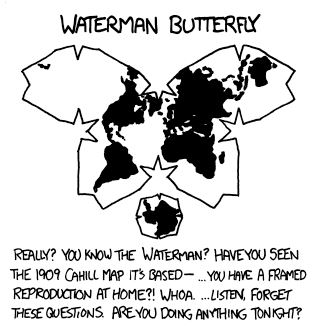Academic study on the use of the octopus metaphor to represent grasping, controlling invasive entities etc. Examines many examples.

Conspiratorial thinking can connect many distinct or distant ills to a central cause. This belief has visual form in the octopus map: a map where a central force (for instance a nation, an ideology, or an ethnicity) is depicted as a literal or figurative octopus, with extending tendrils. In this paper, we explore how octopus maps function as visual arguments through an analysis of historical examples as well as a through a crowd-sourced study on how the underlying data and the use of visual metaphors contribute to specific negative or conspiratorial interpretations. We find that many features of the data or visual style can lead to “octopus-like” thinking in visualizations, even without the use of an explicit octopus motif. We conclude with a call for a deeper analysis of visual rhetoric, and an acknowledgment of the potential for the design of data visualizations to contribute to harmful or conspiratorial thinking.
Via Metafilter:
Poor octopuses. They’re not a real danger to humans so we shouldn’t find them creepy or repulsive. Unfortunately for them, they look like a crossover between two things we evolved to stay away from: spiders and snakes.
The paper mentioned: https://dl.acm.org/doi/10.1145/3706598.3713583



